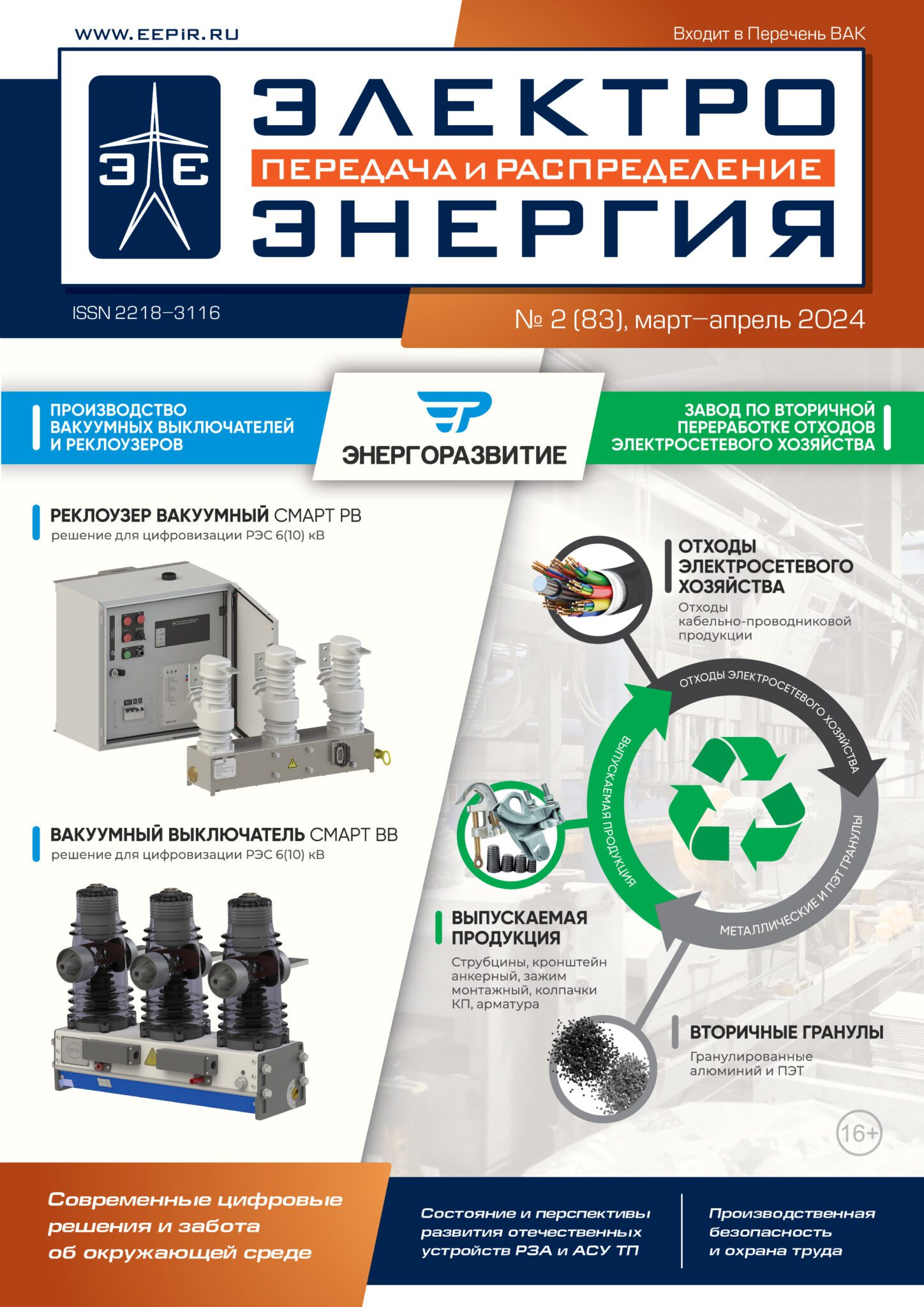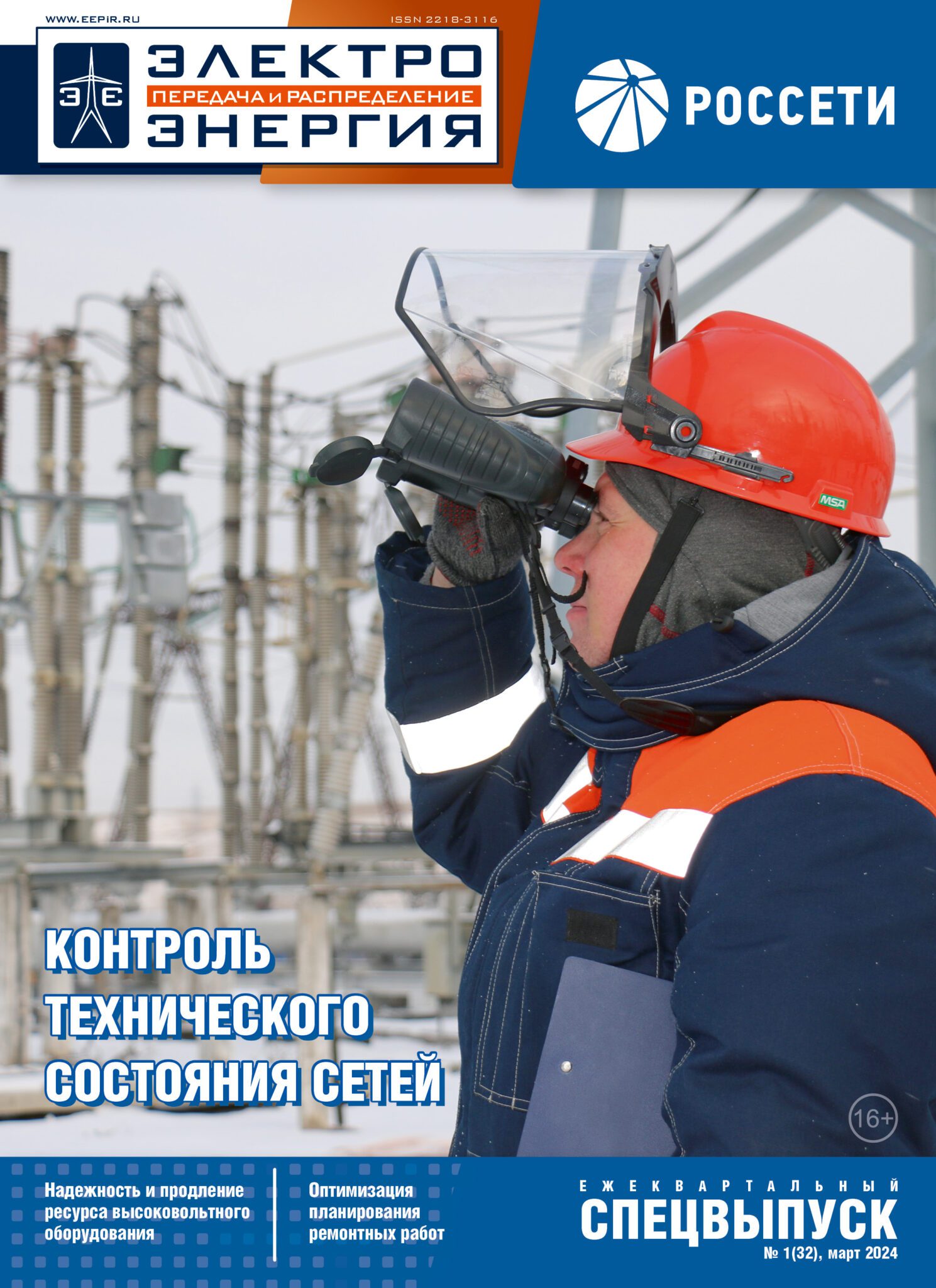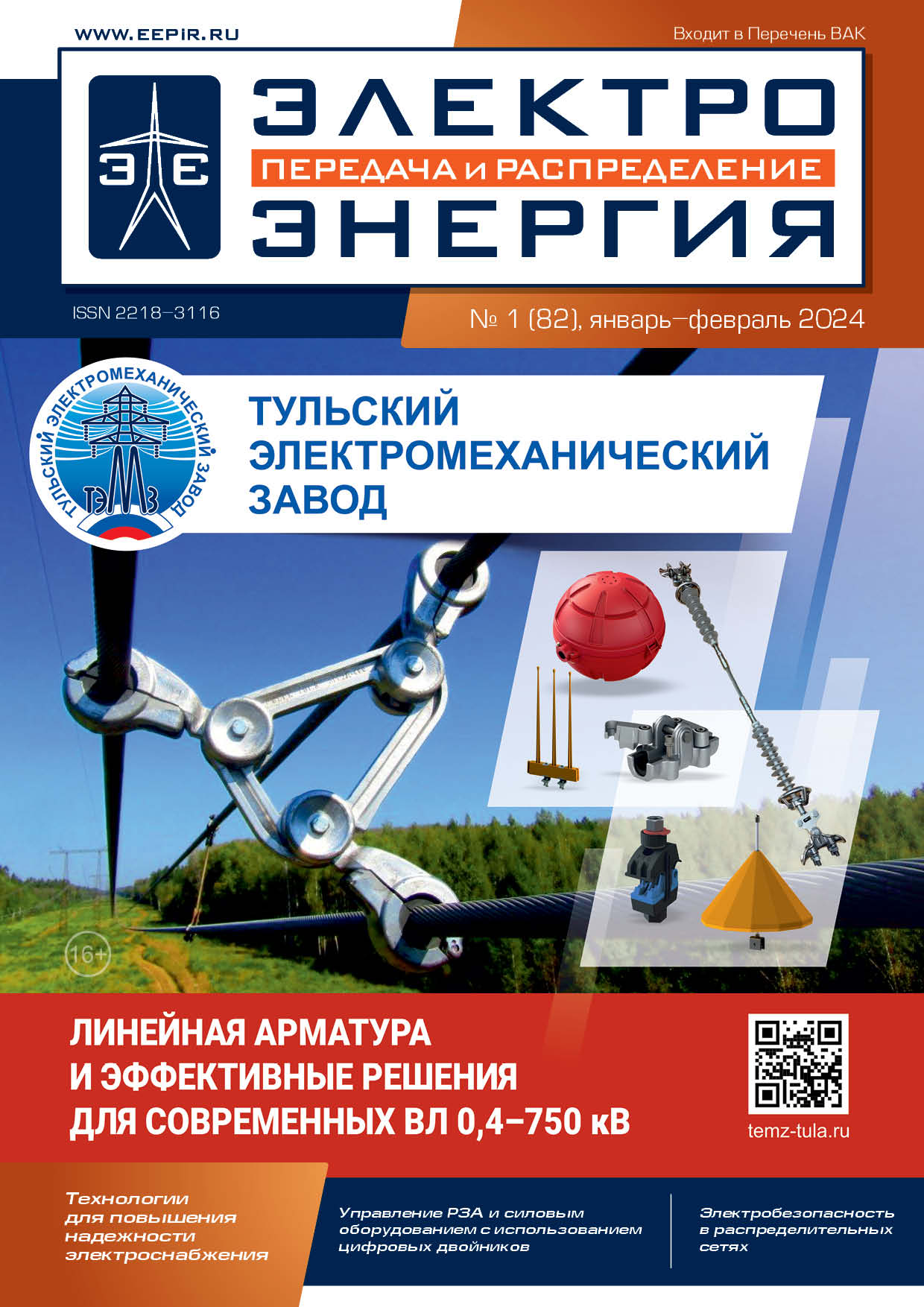 2016 eepr/3 (36) 2016 eepr_ обложка.jpeg)
10 июня 2016
«ЭЛЕКТРОЭНЕРГИЯ. Передача и распределение» № 3(36), май-июнь 2016
МИРОВОЙ ОПЫТ
“Electric power. Transmission and distribution”
No. 3(36), May-June, 2016
INTERVIEWOF THE DAY
The way to unity
COOPERATION
PJSC “ROSSETI” and State Grid Corporation of China implement collaborative energy project of the 21st century
Integration as an instrument for import substitution
EVENTS
Technical council sets priorities
First start-up facility of Federal test center
ENERGY SAVING
The strategy of energy efficiency enhancement of Rosneft Oil Company
Five-year experience of high efficiency in power engineering
Smart meters as an anticipation of change
ELECTRICAL POWER SUPPLY
Integrated innovative solutions for neutral grounding in 6–35 kV electrical networks
Abstract.
The paper presents integrated innovative solutions for neutral grounding in 6–35 kV electrical networks. Such solutions are extremely important in the design, operation and reconstruction of electrical distribution networks. High- resistance neutral grounding, low-resistance neutral grounding, grounding through continuously controlled arc suppression coils equipped with a low-voltage shunting resistor connected with additional 500 V winding, grounding through continuously controlled arc suppression coils equipped with a high-voltage low-ohmic resistor (which is connected to neutral with power circuit breaker) are considered.
Keywords:
single phase-to-ground fault, insulated neutral, neutral grounding, arc-suppression coil, low-ohmic resistor
Calculation of electrical power supply reliability indexes for ultimate customers
Abstract.
The paper presents methods for calculating average number (mathematical expectation) of ultimate customer outages per year and average number (mathematical expectation) of duration of such outages. Detailed calculation models for event planning and improving electrical power supply reliability of ultimate customers are given.
Keywords:
electrical power supply reliability, ultimate customer, calculation model
GRID CONTROL
IT-projects performance evaluation in distribution utilities
20 kV ELECTRICAL GRIDS
Prospects for 20 kV electrical grids development in PJSC “MOESK”
Transients when switching in 20 kV electrical grid
Abstract.
Resistive neutral grounding in 20 kV electrical grid allows to solve the problems with single-phase arcing faults and ferroresonance phenomenon, to conduct fast fault clearing and to reduce the number of insulation damages for high-voltage equipment. The paper presents the results of experimental studies of electromagnetic transients under single phase-to-ground faults in 20 kV electrical grid conducted by “Bolid” LLC on 220/20 kV “Abramovo” substation of JSC “UNECO”.
Keywords:
power transformer, relay protection, neutral grounding, arc suppression coil, measuring devices
CABLE LINES
Impact of high voltage cable lines on current waveform in surge arrester
Abstract
. Surge arresters with common technical characteristics are installed in high and extra high voltage electrical grids. They are designed to protect electrical equipment of stations and substations from lightning and switching overvoltage. The paper analyzes technical characteristics of surge arresters and examines impact of cable lines on current waveform in surge arresters under different modes.
Keywords:
surge arresters, protection of electrical equipment, power cable insulation, lightning impulse, switching impulse
Mechanical calculation of plastic pipes for cables
Abstract.
In recent years, in Russia there are projects in which the cable line 6 kV class and above are laid in plastic pipes placed in the ground by open method or by the method of horizontal directional drilling (HDD). In many cases, in projects, in fact, there is no mechanical calculation of pipes and a selection of their strength characteristics. At several sites it has already led to the use of unsuitable pipes, their deformation at the point of installation so that tightening of the cable in the pipe was extremely difficult, and even impossible, not to mention removing the cable in the process of operation with a view to its repair or replacement. One of the reasons for this situation is the lack of easy to understand methods of calculation. The article offers a technique which in the first approximation, allows to estimate with sufficient strength characteristics of pipes for laying of cables.
Keywords:
cable line, single-core power cable, cable laying in pipes, cable pipes selection, pipe ring stiffness, the horizontal directional drilling
SUBSTATIONS
Justification transformers quantity on designed substations
Abstract.
According to regulatory requirements for electrical power supply reliability, step down substations have to provide complete redundancy when one transformer is shut down (in this case overload capability of remaining transformers should be taken into account). Due to limitation of permissible transformer overloads in emergency modes, installation of two transformers on substations results in underutilization of transformer capacity and short-circuit current growth on 6-10 kV buses. This article considers substations containing up to four transformers and analyzes circuit designs and conditions for transformers load balancing after planned or emergency maintenance for one of them.
Keywords:
step down substation, permissible transformer overload, total installed capacity, short-circuit current, secondary voltage
The first digit
EQUIPMENT
Innovative way — difficulties and breakthroughs
First trip testing of circuit breaker with PKV/M7 device
New possibilities of Blue e + refrigerating units
FIRE SAFETY
Actual issues of cables fire safety
Engineering breakthrough
HUMAN RESOURCE
Youth Policy
International Youth Energy Forum 2016
Guest of the Journal
“Never say “never”. Be pleased with the past “, — Izyaslav Peshkov
GLOBAL EXPERIENCE
Power Systems Management
Important events in world power systems operation and development in April-May 2016
Power Engineering and Ecology
After Paris. The world took the path of new power engineering
Labor Safety
Approaches to labor safety in electrical grids of the United






